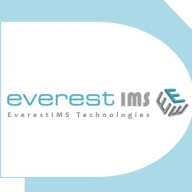

Infraon IMS and VMware vCenter are two leading products in infrastructure management. While VMware vCenter provides more comprehensive features that many feel justify its higher cost, Infraon IMS offers competitive pricing and strong support.
Features: Infraon IMS users highlight its customizable dashboards, ease of integration with other tools, and straightforward deployment. VMware vCenter users emphasize its robust virtualization management, extensive feature set, and advanced capabilities.
Room for Improvement: Infraon IMS could improve in documentation, advanced integration capabilities, and feature set expansion. VMware vCenter could benefit from simpler licensing terms, reduced complexity, and enhanced user experience.
Ease of Deployment and Customer Service: Infraon IMS is praised for its straightforward deployment and responsive customer support. VMware vCenter users report a more complex deployment process but commend the detailed guidance and support provided.
Pricing and ROI: Infraon IMS is acknowledged for its cost-effectiveness and satisfactory ROI. VMware vCenter users find the initial setup cost higher but believe the long-term value justifies the investment.


Infraon IMS offers network monitoring with real-time dashboards, customizable GUIs, and integrated tools, supporting device management and workflow automation efficiently.
Infraon IMS delivers stable performance with features tailored for easy customization and detailed network management. Users benefit from real-time monitoring through role-based dashboards and integrated ticketing tools. However, improvements in reporting, GUI usability, and AI integration are needed. Challenges include monitoring non-IPBS devices and improving connectivity visibility. Users require seamless Infraon Desk integration, ease of device addition, and enhanced topology views.
What are the key features of Infraon IMS?In industries like IT infrastructure and data center management, Infraon IMS is utilized for network monitoring and managing key components such as leased lines and firewalls. Its capabilities aid diverse geographical locations in overseeing data centers, offering centralized monitoring and access to critical infrastructure.
VMware vCenter provides centralized management for virtual machines, offering enhanced resource control, high availability, and data protection. Its integration with NSX and vSAN simplifies infrastructure management, although improvements in pricing, licensing, and technical support are needed.
VMware vCenter streamlines the management of virtual infrastructures, facilitating scalability and elasticity through features like DRS, vMotion, and snapshot capabilities. While users appreciate its centralized control and extensive integration options, complexities in interface and upgrades are seen as challenges. Issues like fragmented licensing, difficult Fault Tolerance management, and high resource demands have been highlighted, alongside the need for enhanced security, monitoring, and seamless cloud integration. vCenter is widely used in data centers for overseeing large virtual environments, integrating cloud services, and providing infrastructure as a service.
What are the main features of VMware vCenter?Industries such as IT, finance, healthcare, and government deploy VMware vCenter to manage their extensive virtual environments. Users rely on its automation and centralized management capabilities to ensure high performance and uptime in data center operations, often leveraging it to integrate with cloud services.
We monitor all Server Monitoring reviews to prevent fraudulent reviews and keep review quality high. We do not post reviews by company employees or direct competitors. We validate each review for authenticity via cross-reference with LinkedIn, and personal follow-up with the reviewer when necessary.